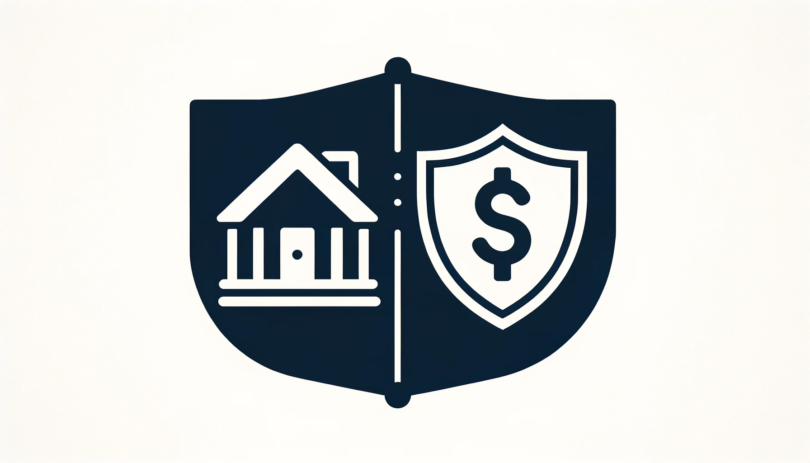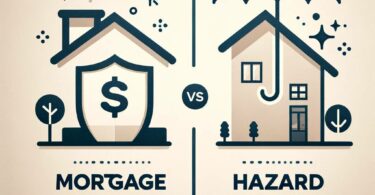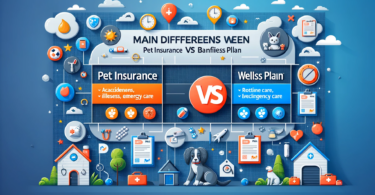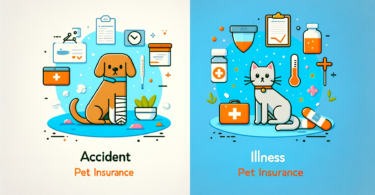When you’re diving into the world of property ownership, you’ll bump into a couple of terms that might seem like they’re dancing on the same stage – PMI (Private Mortgage Insurance) and homeowners insurance. Now, hold your horses! They might be related to owning a home, but they’re as different as chalk and cheese. Let’s untangle this knot, shall we?
The Role of PMI: A Safety Net for Lenders
First up, PMI – the unsung hero for lenders. Picture this: You’re buying a house, but your wallet’s a bit light on the down payment. Lenders get jittery when they hear that. That’s where PMI steps in. It’s like a safety blanket for your lender. If you default on your loan, PMI is there to cover a portion of the loan amount. It’s typically required when your down payment is less than 20% of the home’s value. Think of it as the lender’s insurance, not yours.
Now, PMI isn’t a lifetime buddy. Once you’ve paid down your mortgage to about 78-80% of the home’s original value, you can wave goodbye to PMI. It’s like shedding a layer you no longer need.
Homeowners Insurance: Your Home’s Guardian Angel
Switching gears, let’s talk about homeowners insurance. This is your shield, your guardian against the unexpected. Whether it’s a fire that decides to pay a visit, a burglar who thinks your home is a treasure trove, or Mother Nature having a bad day, homeowners insurance is there to pick up the pieces. It covers the structure of your home, your belongings, and sometimes even your liability for injuries or damages that happen on your property.
Relevant post:
- ShipCover Insurance vs USPS
- Truck vs SUV Insurance Cost
- Car vs Motorcycle Insurance
- Car vs SUV Insurance
- Car Vs Truck Insurance
- Mortgage vs Hazard Insurance
- Costco Car Insurance vs AAA
- Pet Insurance vs Banfield Wellness Plan
- Accident vs Illness Pet Insurance
The Cost Factor: PMI and Homeowners Insurance Premiums
Talking about money, both PMI and homeowners insurance come with premiums. PMI’s cost usually ranges from 0.3% to 1.5% of the original loan amount per year. It depends on your down payment, loan term, and credit score. It’s like the price you pay for not having a hefty down payment.
Homeowners insurance, on the other hand, varies widely based on where you live, the value of your home, and the coverage you choose. It’s more customizable, like picking toppings for your pizza. You could pay anywhere from a few hundred to a couple of thousand dollars annually. The more coverage you want, the more you’ll pay.
Canceling PMI vs Changing Homeowners Insurance
If you’re thinking about breaking up with PMI, you’ll have to prove to your lender that you’ve got enough equity in your home. This usually means getting your home appraised. On the flip side, changing homeowners insurance is a bit more flexible. You can shop around, compare policies, and switch providers more easily. It’s like changing lanes on the insurance highway.
Why You Need Both
You might be wondering, “Do I really need both?” In most cases, yes. If you’re taking out a mortgage and don’t have a hefty down payment, PMI is your ticket to getting that loan. And homeowners insurance? Well, it’s not just a smart move; in many cases, it’s required by lenders. They want to make sure their investment (aka your house) is protected.
So, there you have it – the lowdown on PMI and homeowners insurance. They’re both pivotal players in the home-buying game, each with its own role and rules.
PMI: A Closer Look at Coverage
PMI is pretty straightforward. It doesn’t cover you or your home. Instead, it’s all about protecting the lender. If you default on your mortgage, PMI kicks in to reimburse the lender for a part of the loan. It’s a one-trick pony, but that trick is crucial for lenders when they’re dealing with lower down payments.
Homeowners Insurance: A Comprehensive Protector
Homeowners insurance, meanwhile, is like a Swiss Army knife of coverage. It usually includes:
- Dwelling Coverage: This is the bread and butter of homeowners insurance. If your house gets damaged by a covered peril like fire, storms, or vandalism, this coverage helps pay for repairs or rebuilding.
- Personal Property Coverage: Think of all the stuff you own – furniture, electronics, clothes. If these get stolen or damaged, this part of your policy helps cover the cost to replace them.
- Liability Protection: If someone gets injured on your property, or you (or even your pet) cause damage to someone else’s property, this coverage helps pay for legal fees and damages.
- Additional Living Expenses (ALE): If a covered disaster makes your home uninhabitable, ALE helps cover temporary living costs, like hotel bills.
Comparing Costs: Premiums and Deductibles
Both PMI and homeowners insurance come with premiums and deductibles, but they work a bit differently.
- PMI Premiums: As mentioned, PMI costs vary based on your loan amount, credit score, and down payment. You might pay monthly, as part of your mortgage payment, or as a one-time upfront premium.
- Homeowners Insurance Premiums: These depend on your home’s value, location, your credit history, and the coverage amount. Deductibles also play a big role. A deductible is what you pay out of pocket before insurance kicks in. A higher deductible can mean lower premiums, but it also means more out-of-pocket costs when disaster strikes.
The Impact of Location and Credit Score
Your location and credit score can significantly affect both PMI and homeowners insurance costs. In high-risk areas (like those prone to natural disasters), homeowners insurance premiums can skyrocket. Similarly, a lower credit score can increase your PMI costs, as lenders see you as a higher-risk borrower.
Navigating Changes: From PMI Removal to Homeowners Insurance Claims
Removing PMI usually requires you to reach 20% equity in your home and have a good payment history. You might also need a home appraisal. Homeowners insurance is more flexible. You can file claims as needed (though frequent claims can raise your premiums), and you can shop around for better rates or coverage.
Both PMI and homeowners insurance play pivotal roles in your home ownership journey. PMI makes becoming a homeowner more accessible for many, and homeowners insurance provides a safety net for your most valuable asset.
Navigating Real-Life Scenarios: PMI and Homeowners Insurance in Action
Now, let’s ground our discussion in reality. How do these two types of insurance manifest in the day-to-day life of a homeowner? And more importantly, how can you manage and optimize them for your benefit?
Scenario 1: The Early Years of Homeownership
Imagine you’ve just bought a house. Your down payment was less than 20%, so you’re paying PMI. As you start chipping away at your mortgage, you keep an eye on your home’s equity. Once you hit that magic 20% equity mark, it’s time to contact your lender about dropping PMI. This is a moment worth celebrating, as it can lower your monthly mortgage payment.
Meanwhile, your homeowners insurance is quietly working in the background. It’s a good practice to review your policy annually. Make sure it covers any new purchases or improvements you’ve made to your home. And don’t forget to shop around periodically to see if you can get a better deal.
Scenario 2: Disaster Strikes
Let’s say a tree falls on your house during a storm. This is where homeowners insurance becomes your best friend. You file a claim, and after paying your deductible, the insurance helps cover the repairs. Remember, PMI doesn’t play a role here. It’s not concerned with damages or repairs to your home.
In this scenario, it’s crucial to have a well-documented inventory of your belongings and understand the details of your policy. Knowing what’s covered and how to file a claim can make a stressful situation a bit more manageable.
Scenario 3: Refinancing Your Mortgage
As interest rates fluctuate, you might find an opportunity to refinance your mortgage for a better rate. If you’ve built up significant equity in your home, refinancing might also eliminate the need for PMI. This is like hitting two birds with one stone: potentially lower interest rates and no more PMI payments.
Tips for Managing and Optimizing Your Insurance
- Understand Your Policies: Knowledge is power. Understanding the ins and outs of your PMI and homeowners insurance policies ensures that you’re not caught off guard.
- Keep Track of Your Home’s Equity: Monitoring your home’s equity can help you determine when you can request to cancel your PMI.
- Regularly Review and Compare Homeowners Insurance: Insurance markets change, and so do your needs. Regular reviews can save you money and improve your coverage.
- Maintain a Good Credit Score: A healthy credit score can influence your PMI rates and potentially your homeowners insurance premiums.
- Document Your Home and Belongings: Keep a current inventory of your home and belongings. This is invaluable in case you need to file a homeowners insurance claim.
By understanding the differences between PMI and homeowners insurance and knowing how to navigate them effectively, you can protect your investment and potentially save a significant amount of money over the life of your mortgage. Remember, both types of insurance are tools in your homeowner toolkit, each serving a unique and important purpose.





